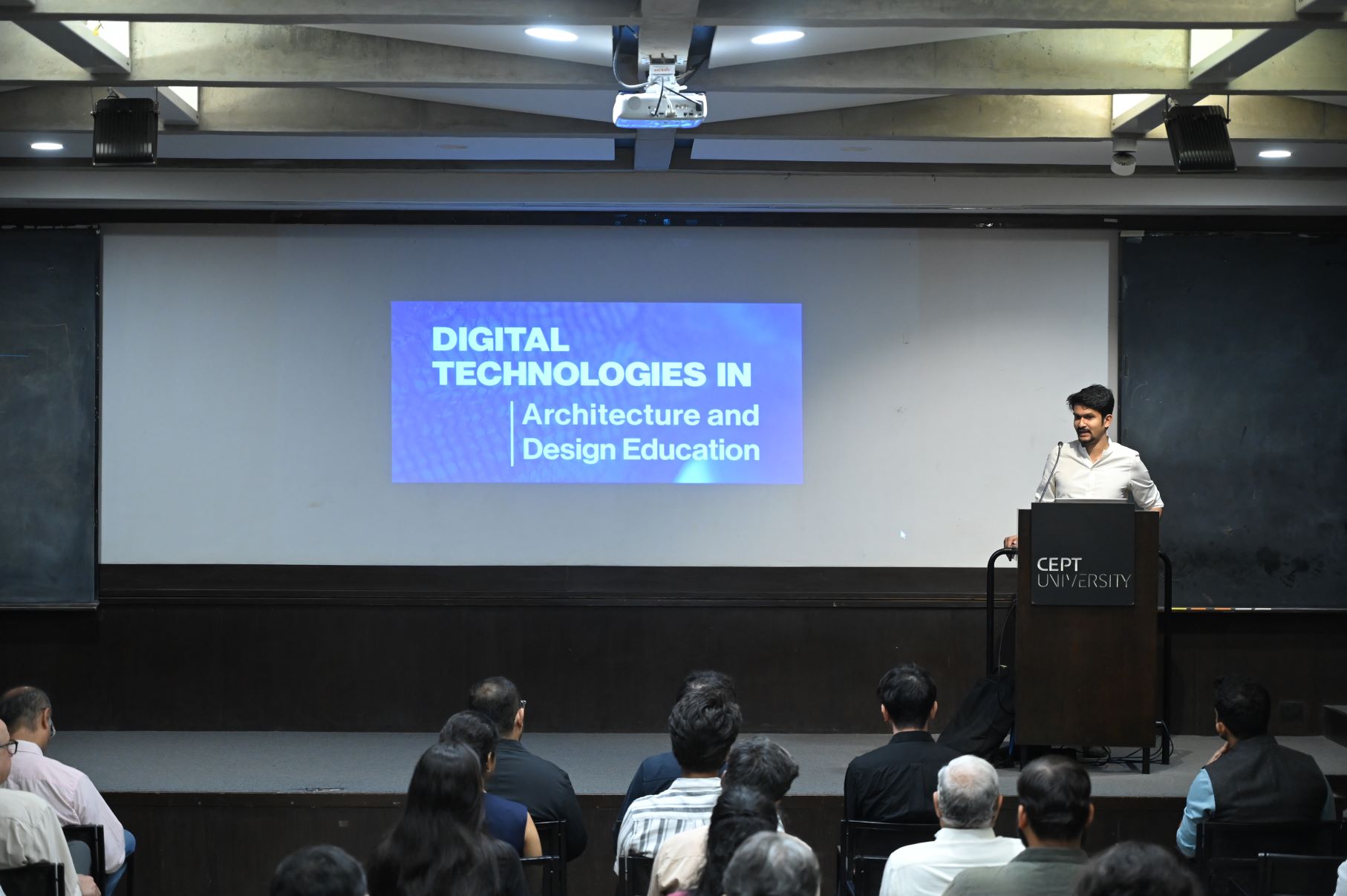Ahmedabad, Gujarat, Apr 12, CEPT University hosted the International Symposium on Digital Technologies in Architecture and Design Education, today.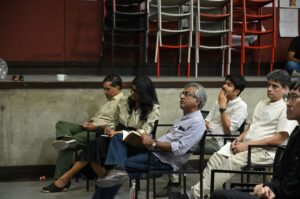
According to an official release by CEPT University, The symposium brought together leading international and Indian experts from academia and industry to explore the profound impact of emerging digital technologies on design practice and education in India. CEPT University organised the symposium with the objective of providing a platform for collaborations with industry and practices to build a future-oriented education program for spatial thinking disciplines in the age of AI.
Studies show that the design discipline is undergoing a profound evolution, with digital technologies becoming an integral part of enhancing creativity and production. From algorithm-driven generative design optimizing for sustainability to architects utilizing predictive modelling for efficiency, advanced technologies are reshaping design and construction processes globally.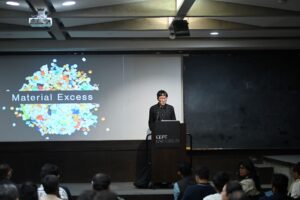
Jinal Shah, faculty member and co-organiser, said, “Studies and practices across the world show that the architecture and design field are quickly adapting to the disruptions caused by digital technologies. These changes are particularly significant in the Indian context, where the architecture and design is set to play a key role in the growing economy and urbanisation. To fully capitalize on the opportunities, we need to recalibrate the education and train a good number of digitally skilled professionals.”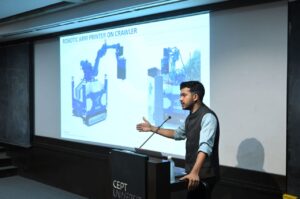
To address this critical juncture, CEPT University organised the symposium by bringing together international experts, Indian professionals and academicians to deliberate the current state of play, cutting-edge technologies, and priority areas.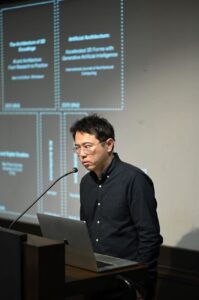
Prof Subin Jameel, faculty member and co-organiser, said, “Through this ambitious symposium, CEPT aims at bringing together experts to contribute to architecture and design education that will help produce graduates with advanced digital skills. Furthermore, the University aims to create a Centre for Digital Technologies that will serve as a shared facility across the University and shall be open to professionals for learning, research and professional training.”
Furthermore, the University aims to create a Centre for Digital Technologies that will serve as a shared facility across the University and shall be open to professionals for learning, research and professional training.”
The day-long symposium hosted renowned international and Indian experts such as Mr Toshiki Hirano; Project Assistant Professor and Director of the International Architectural Education Platform, Sekisui House – Kuma Lab, at the University of Tokyo; Mr Adithya VS, Co-Founder and Chief Executive Officer at Tvasta Manufacturing Solutions; Immanuel Koh, Assistant Professor at the Singapore University of Technology and Design (SUTD), Director of Artificial-Architecture Lab and Manish Gulati, Principal Architect and Founding Partner at M:OFA Studio.
Quote Sheet: Toshiki Hirano: At Kuma Lab, we explore digital fabrication as a counterpoint to Japan’s long-standing tradition of handcraft in construction. Our work attempts to bridge these worlds—fusing meticulous craftsmanship with emerging digital tools to uncover new architectural expressions. We stand at a technological threshold, much like the ‘Paperless Studio’ moment of 1996. But today, it is AI that’s reshaping how we think, draw, and design. The current condition is one of excess—materials, information, possibilities. The challenge isn’t to resolve this excess, but to comprehend it, to navigate it meaningfully.
Mario Carpo once spoke of architectural compression—flattening three-dimensional complexity into a two-dimensional representation. With AI, that compression may no longer be necessary. Instead, we find ourselves engaging with the ‘Uncanny Valley’—not as a zone to avoid, but as fertile ground for design speculation. Obsession plays a central role. It pushes us to use AI not just for efficiency, but to imagine new design paradigms. In our studio, this obsessive curiosity guides us as we search for clarity within the noise—charting new paths rather than offering final solutions.
Adithya VS: At Tvasta, we’re integrating robotics, automation, and machine learning into construction—not to replace the craft, but to reimagine it. Our robotic 3D concrete printers, developed in Chennai and Mumbai, build facades, walls, and structural components through layered deposition—eliminating the need for formwork and unlocking new possibilities in geometry. While the outcome may resemble traditional concrete structures, the process offers a new kind of freedom—unbound by moulds or linear workflows. Since around 2013, 3D printing in construction has moved from concept to implementation, with large-scale adoption gaining momentum globally post-2020. For architects, this evolution calls for a mindset shift. As automation in construction grows from 1% today to over 10% soon, aligning with digital fabrication workflows is no longer optional—it’s essential. Beyond speed, 3D printed construction prioritizes sustainability and mass customization. Ultimately, real progress will depend on collaboration—architects and technologists working together to shape the future of how we build.
Immanuel Koh: Design is shifting—from traditional tools to AI as an active collaborator. It’s no longer just about what AI makes, but how it thinks, questions, and handles complexity. Every AI-generated form reveals a bit of the machine’s logic—glitches, patterns, unexpected reasoning. That’s why we’re asking: What is complexity? What is reasoning? These are design questions now.
At SUTD, students don’t just use AI—they think with it. They work with AI to translate ideas into data and generate forms through shared reasoning. From furniture to food systems, AI is reshaping design. Neural Tectonics captures this shift: not imitation, but co-creation. Designing with AI means engaging its logic, not working around it.
Manish Gulati: There was a time when designing and making were one—when drawing was thinking, and intuition shaped the form. Today, that flow often clashes with software-led systems. Are we truly designing, or just picking from preset options? Parametric thinking isn’t new. Medieval builders worked with proportion and context long before algorithms. It’s a mindset, not a plugin. And real design embraces unpredictability—if the outcome is fixed, it’s not really design.
What matters is agency. Machines shouldn’t just optimise—they should express, even surprise. In Swarm Elegance, bird-like behaviour shaped modular structures from chaos. At the Watersports Institute, years of blending hand and tech proved that narrative and constraint still belong.
Good design isn’t always clean. Sometimes, it starts in a mess.
About CEPT University: CEPT University is a recognized leader in education and research in the areas of architecture, planning, design, technology and urban management. Its teaching programs aim to build thoughtful professionals and its research programs deepen understanding in its areas of expertise. CEPT University also undertakes advisory projects to support the national, state and city governments and large sections of private industry. Through its education, research and advisory activities, the University strives to contribute to enriching the lives of people in India’s villages, towns and cities.
The University comprises five faculties: viz. the Faculty of Architecture, the Faculty of Planning, the Faculty of Technology, the Faculty of Design, and the Faculty of Management. In December 2023, CEPT University was recognized by the Government of India as a Centre of Excellence in Urban Planning and Design. This comes with an endowment of Rs. 250 Crore to be used towards the research and training on India specific knowledge in Urban Planning and Design over the next 25 years.
CEPT University was established by the CEPT University Act of 2005 enacted by the government of Gujarat. It was originally started in 1962 as the School of Architecture supported by the Ahmedabad Education Society. The Department of Scientific and Industrial Research (DSIR) of the Government of India recognizes the University as a Scientific and Industrial Research Organization (SIRO). CEPT University is recognized as a Center of Excellence by the Government of Gujarat. CEPT University has over 30 ongoing collaborations and exchange programs with top-ranked universities across the world.
